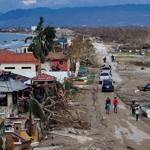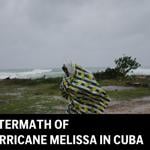Just as Foster City officials are poised to approve several critical documents that will guide future land use policies and sustainability initiatives, the City Council may delve further in the coming year by updating the Bayfront community’s long-standing Master Plan.
It’s known as one of the first planned communities in the state after founder T. Jack Foster outlined the vision for the city in the 1970s. Decades later, city officials have continued to update guiding documents such as portions of the community’s General Plan and for the first time will consider enacting a Climate Action Plan.
On Monday, Jan. 6, the council will convene to review the Land Use and Circulation elements of the General Plan as well as the nearly 200-page document highlighting sustainability policies aimed at reducing greenhouse gas emissions.
The city is striving to adhere to state mandates by outlining several measures ranging from diverting waste from landfills to reducing vehicle emissions. The goal is to reduce 2005 greenhouse gas levels by 15 percent by 2020 and by 80 percent before 2050.
“There are a lot of things the state does related to emissions with their regulations on fuels and car emissions. But really, the effort to reduce greenhouse gas needs all levels of governments to do their parts,” said Leslie Carmichael, a consultant planner with the city.
The city has already implemented several reduction measures, such as installing solar panels on city properties and considering participation in a regional community choice aggregation plan. Yet more may be needed to reduce about 7,615 metric tons of carbon dioxide over the next five years and another 13,267 metric tons by 2025 to achieve a 20 percent reduction, according to the plan.
A variety of measures are suggested such as improving pedestrian and bicycle safety, installing electric vehicle charging stations, conserving water as well as energy, promoting stricter green building standards and educating the public on how they can contribute.
Vice Mayor Charlie Bronitsky said the city must be on the forefront of environmental sustainability, particularly when considering how humans can reduce their impacts on climate change — a significant issue for a city that is considering upgrading its levees to meet federal standards and adapt to sea level rise.
Foster City led the Peninsula Sunshares program enabling county residents to buy solar at reduced prices, is considering buying electric and compressed natural gas vehicles to use with the new digester at the wastewater treatment plant it shares with San Mateo, and has long had an environmental sustainability task force, Bronitsky said.
“The council has made sustainability one of their goals and it’s important for the city to do what it can by preparing the climate action plan that helps the City Council see which programs make the most difference,” Carmichael said.
Vehicles are one of the main contributors with highway transportation accounting for 35 percent and traffic on local roads making up another 21 percent, according to the report.
Mayor Herb Perez noted the increased traffic is a byproduct of the region’s economic boom and various sectors including businesses can participate in reducing emissions by bolstering transit programs such as shuttle services to keep people out of single-occupancy vehicles.
Recommended for you
The production of housing has not kept up with the region’s and Foster City’s job growth, causing prices to rise and increasing traffic. After eight years of no housing construction, several large residential projects are currently under construction and slated to bring hundreds of units into the market, according to the report.
Still, more may be needed if Foster City and the surrounding communities are to address the affordable housing crisis in a meaningful way. Enabling more people to live nearby where they work could also support sustainability measures by reducing commuter traffic, Perez said.
“We have one significant challenge which we can do better at, which is the housing element. Because ultimately, that is a big part of the Climate Action Plan and the interplay with traffic,” Perez said. “But I think this is a great step to show our commitment to being environmentally responsible.”
Bronitsky said the city is primarily built out and creating plans to address the impacts of current and future developments is important.
“To deal with the significant impacts to schools and traffic, while we continue to have some level for growth because municipal economics require it,” Bronitsky said, adding the city should strive for economic as well as environmental sustainability.
Much of the community has adamantly opposed any more housing developments and Carmichael emphasized the proposed changes in the General Plan don’t allow for any more or less developments within the city.
Instead, these document changes in many ways solidify existing city policies and bring the plans up to the council’s current policy standards — which could serve as a good starting point for future discussions, Carmichael said.
Perez said he’s hopeful the council and community will join for a more comprehensive conversation on the vision for Foster City and whether to contribute to helping solve the housing shortage by being open to more units.
“We as a community need to decide to what level we want to participate in resolving the housing crisis,” Perez said. “We as one community cannot solve the housing crisis by ourselves, we are but one drop in a bucket for the potential to solve that. But if each community does its part, then it has a significant impact.”
While no decisions will be made without thorough planning discussions and public meetings, Perez and Bronitsky said they’re hopeful the community will join to consider updating the city’s Master Plan to ensure it continues to serve Foster City well in the coming decades.
“The more exciting conversation is what do we want for the future of our city and what is the new Master Plan to get us there,” Perez said, adding the new Climate Action Plan and General Plan update are also important. “These kinds of documents are guiding documents that provide us with the guidance that we need to move forward with a city that is economically and environmentally sustainable for the future; so it’s absolutely critical.”
The Foster City Council meets 6:30 p.m. Monday, Jan. 6, at City Hall, 620 Foster City Blvd. Visit www.fostercity.org for more information.






























(0) comments
Welcome to the discussion.
Log In
Keep the discussion civilized. Absolutely NO personal attacks or insults directed toward writers, nor others who make comments.
Keep it clean. Please avoid obscene, vulgar, lewd, racist or sexually-oriented language.
Don't threaten. Threats of harming another person will not be tolerated.
Be truthful. Don't knowingly lie about anyone or anything.
Be proactive. Use the 'Report' link on each comment to let us know of abusive posts.
PLEASE TURN OFF YOUR CAPS LOCK.
Anyone violating these rules will be issued a warning. After the warning, comment privileges can be revoked.